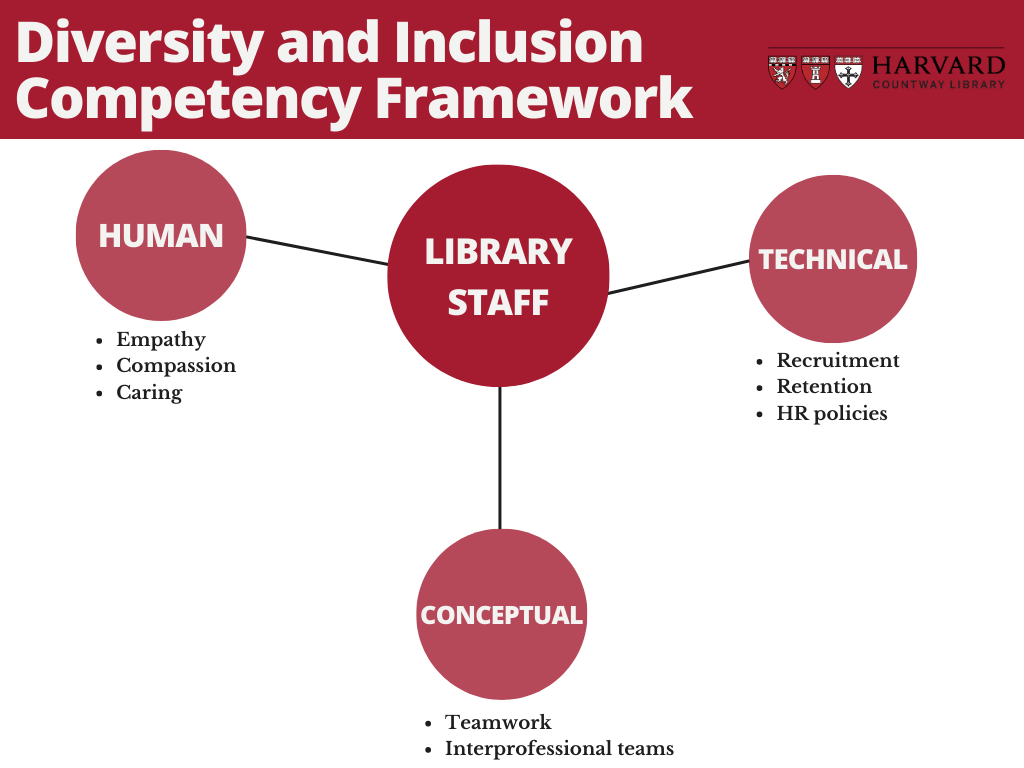CAT has had a number of working sessions to discuss and incorporate the feedback that was received surrounding the diversity plan. Attached is the compilation of edits, and this plan will be discussed and presented for final feedback at the March 23rd All-Staff meeting. I wanted to share the plan in advance of our meeting. The process for the staff meeting discussion and feedback is as follows:
- Staff will be placed into assigned breakout rooms
- Breakout room attendees will have 15-20 minutes to discuss the plan and document their discussion
- At the end of the breakout session, staff will come back and each breakout room will have the opportunity to report back to the entire group. Each breakout room will need to decide who will record comments and who will present comments. Members of the Countway DIB Team have offered to record for their groups.
- CAT will take the feedback and incorporate one final review of the plan and then distribute the plan
In preparation of the group breakout sessions, the questions below are provided to guide your breakout room discussions in order to facilitate discussion surrounding Countway’s diversity plan.
- What should be added to the plan?
- What should be removed from the plan?
- What do you need to know that isn’t included?
- Is anything unclear about the plan?
CAT is generating a framework for diversity, inclusion and belonging competencies for all staff and the stages for diversity planning and implementation—Preliminary First Draft diagrams attached to this message. CAT and the Library’s DIB Team will continue to fill in the blanks and then we will solicit input from the staff. The stages are necessary in order to ensure success. Once we have the competencies agreed upon, we will work with our consultants and Harvard University DI officers to create training as well as other opportunities for staff to gain these competencies. Discussion of the proposed stages and competencies will be a topic for a future staff meeting. They are being distributed in this message as an illustration of what may result as part of the discussion but are by no means final. They just serve as an example of what we mean by competency and stages.
We have a Countway DIB team (me, Alison R, Michelle, Meredith, Mathew, Heather M.) who will work in tandem with CAT and serve as the major planning bodies for implanting the diversity plan. In addition, we have engaged Shannon Jones and Beverly Murphy as one set of consultants. They are authors of the book “Diversity and Inclusion in Libraries.” We have acquired copies of their book for each staff member and Matthew will coordinate distribution of the books. The Countway Diversity and Inclusion and Belonging team will meet with Shannon and Beverly next week and the purpose is work with them to plan a presentation, kick-off event sometime to be held in the next couple of months and we are hoping the staff can familiarize themselves with this book prior to the meeting (date is TBD).
Lastly, we are arranging a presentation by Marna Crowley-Robinson, a librarian at the University of Michigan Libraries and a licensed social worker. She is an expert in the field of trauma-based practice and how this applies to libraries. We as a library staff will gain awareness of trauma-based library practice in preparation and planning for opening more fully this summer. The date of her session will be sometime in May or June due to her schedule.
Diversity, Inclusion and Belonging as well as Trauma Based Library Practice are two important library-wide themes for us to focus on as we enter year two of working in a pandemic. We have demonstrated over the past year that we are better together.
Elaine

